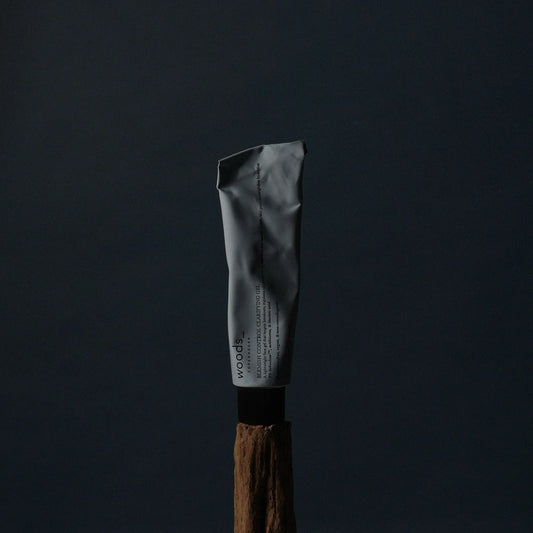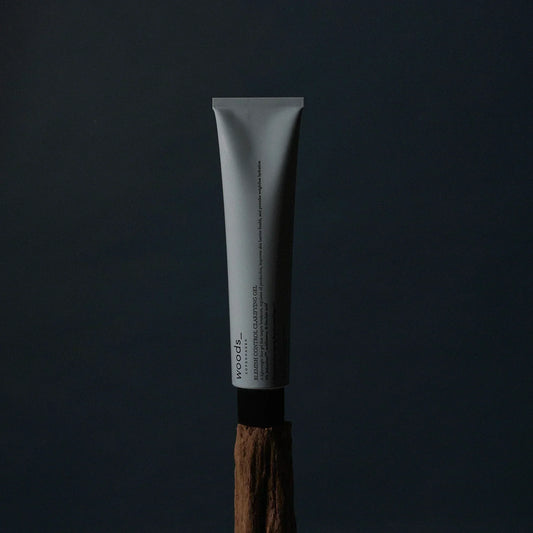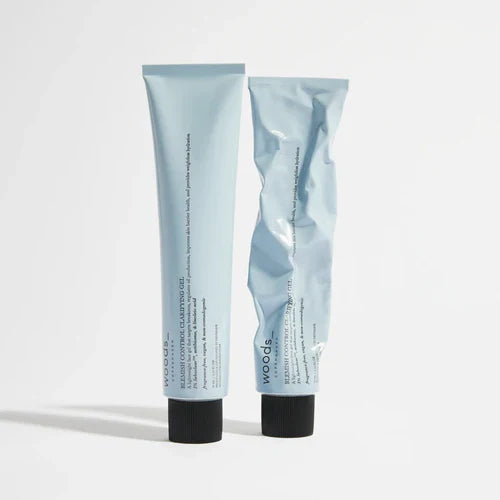The fundamentals of the controversy
Mineral oil is a derivative of petroleum and consists of a complex mix of hydrocarbons (a benzene). This composition allows the substance to form a barrier on the skin and thereby prevent moisture loss.
These occlusive properties, along with the fact that the substance is cheap to manufacture due to it being a by-product of the oil industry, play a viral role in the ingredient gaining world-wide traction and finding its way to many people's daily rituals through e.g. diet and skincare. The debate about mineral oil typically circles around two main factors: 1) How it can trick you, and 2) its potentially harmful content. Let's explore them each.

1: How mineral oils can trick you
Though coating your lips or covering a dry patch with a product based on mineral oil can provide immediate relief, the feeling will be short-lived. Due to the large molecular size of the mineral oil, it can't penetrate the skin; and because it won't absorb into the skin (and doesn't contain any nurturing ingredients), the ingredient won't work to actually improve your skin's condition.
Rather, you can risk leaving your skin addicted to the brief, symptomatic treatment (what is also referred to as petroleum addiction), which can end up in an uncomfortable cycle. You know how some people can't go anywhere without their lip balm due to a seemingly endless need to reapply? Or how some can't seem to combat dry legs no matter how much they soak them in lotion? This could be the explanation.
2: The potentially harmful content of mineral oil
In recent years, ingredients like mineral oil have undergone examination due to criticism of its potentially harmful effects. The culprits of this controversy are particularly MOSH and MOAH. These are both hydrocarbons found in mineral oils, whereas MOSH is carcinogenic, and MOAH can build up in the body upon ingestion. Below, you'll find a breakdown of both of them.

However, sources (cf. source 1) claim that the potential harm can vary from substance to substance.
How we come in contact with mineral oils
We're repeatedly and continuously exposed to mineral oils throughout everyday life – even when we probably aren't aware of it. For example, mineral oils are found in various types of food (rice, pasta, chocolate etc.), as well as in children's toys, packaging, not to mention an abundance of cosmetics and skincare products. This includes numerous lip care products, baby oils, foundations, sunscreens, hair gels, moisturizers, and the list continues.
Though mineral oil can't absorb into the skin, it can still gain access to our bodies. For example, the particles release into the surrounding air with our dead skin cells (fun fact: we shed around 30.000-40.000 skin cells every minute!), causing an inhalation risk – not to forget that we consume it directly through our diet, and potentially through our skincare and makeup (looking at you, mineral oil based sun sticks and lip balms). For example, did you know that you consume approximately four lip balms a year with daily use (cf. source 3)?
How to spot mineral oil in your products
Some products containing mineral oil can still obtain certifications. So, if you're generally guided by certifications when selecting your products, you can consider switching your attention toward the ingredient list instead. We've highlighted some of the aliases of mineral oil below to help you easily detect it.

POV: You just discovered that you've used mineral oil for an extended period of time – should you be worried? No, panic is never our intention.
In Europe, mineral oils are only allowed in cosmetics if they comply with comprehensive legal regulations and specifications of quality based on the Cosmetics Law. In other words, these types of products are subject to thorough safety evaluations and purifying processes before they reach your shelf.
Sources have also shown that there have been no reports of any effects on health due to the consumption of mineral oils from cosmetic products – even though the products were used daily and for many years (cf. source 4). Put shortly: the requirements for the quality and the concentration of mineral oil in currently developed products should ensure that its potential risks shouldn't be a concern of yours as a consumer.

However, it’s ever so important keeping yourself updated on the latest findings on debated ingredients like this one – to make sure that you’re a-okay with what you’re possibly subjecting yourself (and your skin) to.
As mentioned, we’re often exposed to mineral oil daily through various factors. Therefore, it’s nearly impossible to steer completely clear of. However, if you wish to limit your intake of mineral oils, your lip products could be a good place to begin.
So, what’s the takeaway? The purpose of this article is, as always, giving you the opportunity to choose your products based on an enlightened foundation; meaning you’re aware of the ingredients that will eventually be absorbed into your system.
List of sources:
- Source 1: ”Mineralske olier (MOSH og MOAH)” foedevarestyrelsen.dk.
- Source 2: ”Mineralske olier – hvad er det?” taenk.dk, Søndergaard, Niels, 2023
- Source 3: ”Sådan spotter du mineralske olier i læbepomade” taenk.dk, Søndergaard, Niels, 2022
- Source 4: "Highly refined mineral oils in cosmetics: Health risks are not to be expected according to current knowledge", BfR.bund.de, 2018
More posts
-
Adult acne: from cause to treatment
While many associate acne and blemishes with the turbulent teenage years, the reality is that many adults continue to grapple with breakouts well into their 20s, 30s, and beyond. But...
Read more -
Skincare for teens: a step-by-step guide
Navigating skincare as a teenager (or honestly, just as much as an adult) can feel like a maze. In this digital age, we’re constantly flooded with the newest trends and...
Read more -
Introducing: blemish control clarifying gel
Breakouts are one of the most common skin concerns, affecting people of all ages and skin types. And when it comes to treating blemishes, striking the perfect balance can be...
Read more
- Choosing a selection results in a full page refresh.
- Opens in a new window.



